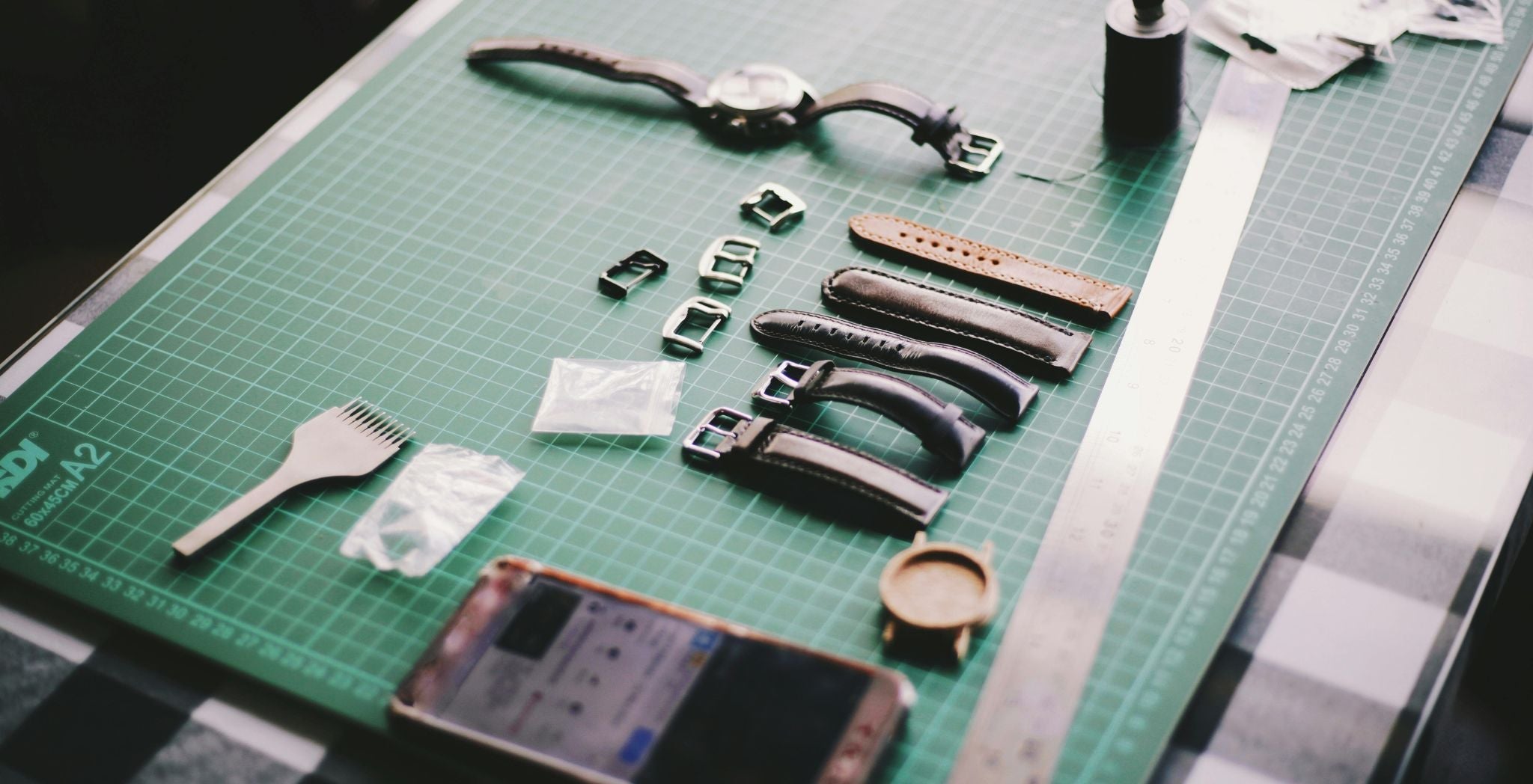My Shopping Bag
Your Bag is Currently Empty

Proper watch maintenance is essential for every watch owner, whether you own a luxury mechanical watch, an automatic timepiece, a quartz watch, or a smartwatch. Regular upkeep ensures that your watch remains accurate, functional, and visually appealing while preserving its value over time.
Neglecting watch care can lead to wear, malfunctions, or costly repairs. By understanding how to maintain a watch and following professional advice, you can prolong the lifespan of your timepiece and enjoy its performance for years to come.
This watch maintenance guide is designed for UK-based watch enthusiasts, collectors, and everyday wearers seeking expert tips on care, servicing, and upkeep.

Mechanical and automatic watches rely on intricate gears and springs to function. Over time, lubricants can dry out, and components can wear down, which can affect precision.
Regular mechanical watch maintenance ensures that all parts function correctly, preserving the watch's performance. Even high-quality quartz watches benefit from periodic care to maintain battery health and movement accuracy.
Routine watch upkeep can significantly increase the lifespan of your timepiece. Watches exposed to extreme conditions or left unserviced may develop internal issues that compromise their longevity.
By following a regular maintenance routine, you help prevent expensive repairs while keeping your watch looking as good as the day you bought it.
High-end timepieces, including luxury watches, can be significant investments. Proper luxury watch maintenance preserves resale value and ensures your watch remains a collector's item.
Brands like Rolex, Patek Philippe, and Audemars Piguet often retain or even increase in value when well-maintained. Professional servicing can prevent damage that might otherwise reduce a watch's market value.

Mechanical watches require precise attention because of their complex internal movements. Components such as gears, springs, and balance wheels must be lubricated and cleaned to prevent friction and wear.
Professional servicing usually involves disassembly, cleaning, lubrication, and reassembly. A full mechanical watch service is recommended every 3 to 5 years, depending on usage.
Automatic watches wind themselves through wrist motion, but they still need periodic care. Lubrication, cleaning, and inspection of the rotor and other moving parts are essential for continued accuracy.
A professional automatic watch service every 3–5 years ensures smooth operation and prevents the movement from deteriorating.
Quartz watches are powered by batteries, making them generally low-maintenance. However, regular quartz watch care includes:
Battery replacement every 1–3 years
Checking gaskets to maintain water resistance
Cleaning the exterior to preserve the appearance
Although quartz watches are simpler mechanically, neglecting these steps can lead to performance issues.
Digital and smartwatches require maintenance that focuses on electronic components rather than mechanical components. Regular tasks include:
Updating software and firmware
Cleaning sensors and charging ports
Battery care to prevent degradation
Proper cleaning of screens and sensor areas prevents malfunctions and extends the lifespan of smartwatches.
Regular cleaning protects your watch from dirt, dust, and oils. Recommendations include:
Wiping the case and dial with a microfiber cloth
Cleaning metal bracelets with mild soapy water and a soft brush
Using a leather cleaner for leather straps
Routine cleaning is a crucial step in maintaining the upkeep of luxury and designer watches.
Exposure to magnets, extreme temperatures, and harsh chemicals can damage your watch.
Avoid magnets to prevent accuracy issues with mechanical and automatic watches
Keep watches away from cleaning chemicals, perfumes, and cosmetics
Prevent prolonged exposure to extreme heat or cold
These steps are especially critical for caring for luxury watches.
Manual mechanical watches require regular winding to maintain lubrication and accurate timekeeping. Automatic watches should either be worn frequently or kept in a watch winder when not in use.
This ensures smooth movement of internal gears and prevents stiffness that can affect performance.
Proper storage protects your timepiece from scratches, dust, and moisture:
Keep watches in a cool, dry place
Use watch boxes, pouches, or cases
Store automatic watches in winders if not worn regularly
Mechanical and automatic watches: Every 3–5 years
Quartz watches: Battery replacement every 1–3 years
Check gaskets for water resistance during servicing
If your watch experiences:
Accuracy problems
Damage to the case or crystal
Moisture inside the case
Always select certified watchmakers or authorised centres for high-end watches. Experienced technicians ensure proper servicing and help maintain the longevity of your watch.
Even unworn automatic watches need winding every few days. This keeps the movement lubricated and prevents stiffening of internal components.
Check the gaskets and seals regularly. Even water-resistant watches can lose effectiveness over time, especially when exposed to chemicals or extreme conditions.
Physical impacts can disrupt delicate mechanical parts. Handle watches carefully, mainly mechanical and automatic models.
Maintaining a record of services and repairs helps track maintenance intervals and ensures you follow a consistent watch maintenance checklist.
Regular watch maintenance is essential to keep your timepiece running smoothly, looking elegant, and performing with precision. From luxury mechanical watches to quartz and smartwatches, proper care protects your investment, ensures longevity, and maintains your watch's aesthetic appeal.
Follow these watch care tips and rely on professional services when necessary to enjoy your timepiece for years to come. A well-maintained watch is not only a functional accessory but also a valuable collector's item.
0 Comments
Please log in or sign up to leave a comment.